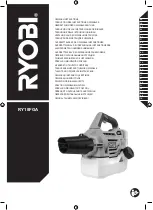
Chapter 4
| Monitoring
©2007-2015 Physio-Control, Inc.
LIFEPAK 15 Monitor/Defibrillator Operating Instructions
81
Equipment Damage
Do not inflate a cuff unless it is placed on an extremity.
How NIBP Monitoring Works
The NIBP monitor uses the oscillometric measurement technique. The oscillometric technique
does not use Korotkoff sounds to determine blood pressure; rather, it monitors the changes in
pressure pulses that are caused by the flow of blood through the artery. The NIBP monitor
inflates the cuff around the patient’s arm to a value that occludes the artery, and then deflates
the cuff in steps. When blood starts to flow through the artery, the increasing blood flow causes
the amplitude of the pressure pulses in the cuff to increase. As the NIBP monitor steps the
pressure down, the pulses reach a peak amplitude and then start to decrease. The rising and
falling amplitude values form a curve that is analyzed to yield systolic pressure, diastolic
pressure, and mean arterial pressure (MAP).
The NIBP monitor measures the pulse rate by tracking the number of pulses over time. The NIBP
monitor uses artifact rejection techniques to provide accurate results under most operating
conditions. When a patient is experiencing arrhythmias during a measurement, the accuracy of
the pulse determination may be affected or the time needed to complete a measurement may be
extended. In shock conditions, the low amplitude of blood pressure waveforms makes it difficult
for the monitor to accurately determine the systolic and diastolic pressures.
NIBP Monitoring Considerations
As with any noninvasive oscillometric blood pressure monitor, clinical conditions can affect the
accuracy of the measurements obtained, including the following:
•
The patient’s physiological condition. For example, shock may result in a blood pressure
waveform that has a low amplitude, making it difficult for the monitor to accurately determine
the systolic and diastolic pressures. Altered hemodynamics caused by pregnancy, including
preeclampsia, may result in inaccurate readings.
•
The position of the patient.
•
Motion may prolong the measurement process since motion artifacts have to be rejected in
the data stream. Motion that affects measurement can include patient movement, patient
seizure, bumping the cuff, and flexing the extremity under the cuff.
•
The presence of other medical devices. The NIBP monitor does not operate effectively if the
patient is connected to a heart/lung machine.
•
Extremes of temperature, humidity, or altitude.
•
When a patient is experiencing arrhythmias, pulse rate accuracy may be affected or the time
needed to complete an NIBP measurement may be extended. The device automatically
deflates if a blood pressure measurement cannot be obtained in 120 seconds.
•
Blood pressure and pulse can fluctuate greatly between measurements; the monitor cannot
alert the operator of changes in vital signs that occur between measurement cycles.
Summary of Contents for LIFEPAK 15
Page 1: ...MONITOR DEFIBRILLATOR Operating Instructions ...
Page 2: ......
Page 3: ...MONITOR DEFIBRILLATOR Operating Instructions ...
Page 8: ......
Page 10: ......
Page 14: ......
Page 20: ......
Page 44: ......
Page 46: ......
Page 112: ......
Page 114: ......
Page 148: ......
Page 150: ......
Page 160: ......
Page 174: ......
Page 190: ......
Page 198: ......
Page 200: ......
Page 222: ......
Page 244: ......
Page 250: ......
Page 252: ......
Page 258: ......
Page 262: ......
Page 268: ......
















































